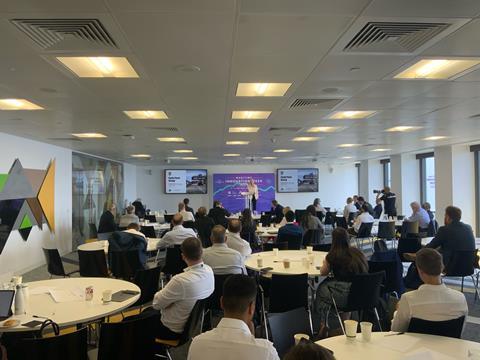Ports play a critical role in the project logistics supply chain and data-driven tools can revolutionise terminal operations, according to Carole Cran, chief financial officer at Forth Ports Group.

“Although ports are a small part of the global logistics network, it was apparent that with so many data points we could create a tool that would improve insight and decision-making,” said Cran at the inaugural Maritime Innovation Week on June 15. “The adversity of the pandemic and resultant supply chain disruption brought forward the opportunity to fast-track our vision.”
Led by a number of graduates, Forth Ports created a self-service business intelligence (BI) platform with some key artificial intelligence (AI) functionality. “In one platform, we have created a solid data architecture and governance that is unlocking business insights in real time by tapping into multiple information streams at any one point.”
Initially, the project focused on the group’s unitised business at Grangemouth and Tilbury. “But quickly we’ve moved from ‘what’s in the box?’ to ‘where can we find operational efficiency across our entire business – from marine and cars to cruise and utilities?’ – using this innovative tool,” she explained.
She said that benefits are spread across several areas, including shifting informational imbalances and time savings for employees, while creating opportunities for incremental business growth through early insights. This new tool has helped keep strategically important supply chains moving during the pandemic, but also supported Forth Ports in anticipating blockages, particularly towards the end of 2021.
She added: “Previously smaller decisions, where business strategy impact was unknown, could have been reactive and less effective, but we are now able to take a more interconnected approach ensuring actions are taken in a unified direction.
“In a time of more ad hoc ship calls and container storages, we were able to better monitor congestion issues with a powerful set of reports to mitigate disruption with a demand driven and fluid approach to managing yard capacity.”
For example, she said, “by adjusting to trends in stock holdings, average dwell times, vessel utilisation and scheduling, we acted at Grangemouth to create additional space to manage increased demand for laden export storage in the winter”.
AI and BI tools are in their early stages in the heavy lift and project logistics sector. Having just scratched surface of what may be possible, HLPFI will keep a keen eye on how these technologies could be adopted by our business.
















